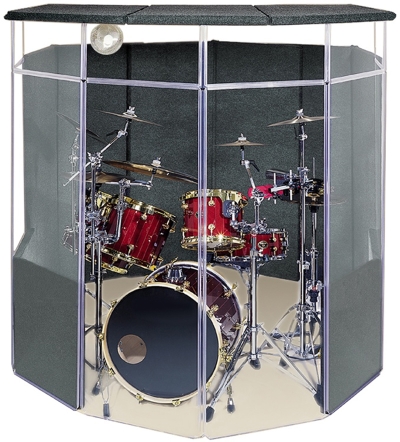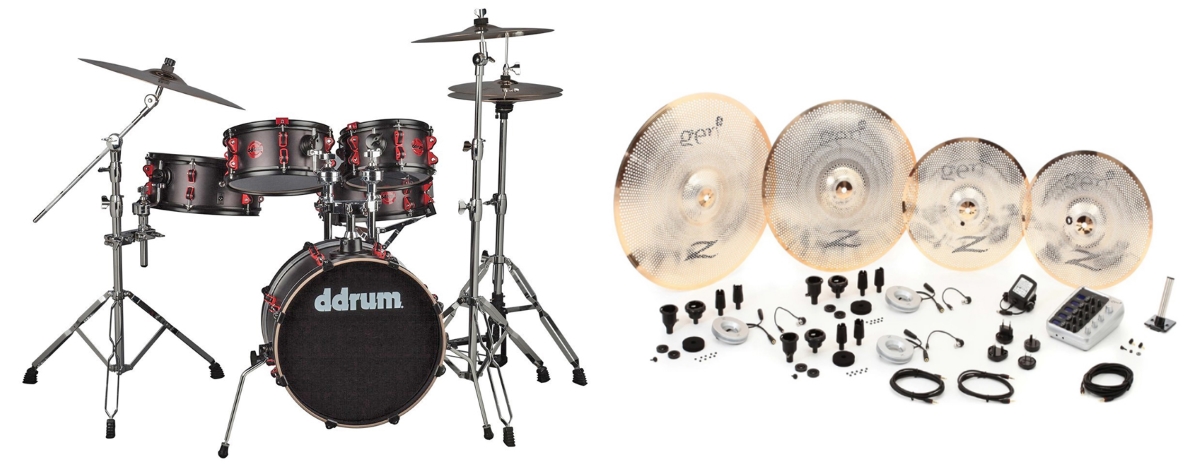It’s time to tackle the 800-pound gorilla on the stage… the drummer. I’m not hating on drummers and in fact, really do love a great-sounding kit. I’ve miked up hundreds of them over the past 40 years or so and have done a good job of it, maybe even great at times. (If I do say so myself.)
However, they’ve typically been on large stages in huge rooms or outdoors, where the band can pretty much play as loud as it likes and there’s enough PA for 10,000 to 20,000 listeners in the audience.
But what happens when we take that same band and put it in a small room for a worship service, wedding reception or corporate event? You know, gigs where the band is not the star but a support act.
Well, it often turns into “loudness wars.” The band plays at 110 dB or more while the client complains to me that it’s way too loud but I’m only putting vocals in the monitors and that output is bouncing off the back wall so loudly that the main mix is turned down to nothing. Phew…
Generally, the loudness wars start with drummers. They aren’t completely to blame since drum kits are designed to be hit hard, which makes them loud on stage. All other instruments then tend to come up to the same decibel level, so now there’s loud bass, loud keys, and loud wedges on stage.
I’ve sat in the first row of many worship services where the house system was turned off and still measured SPL of 105 to 110 dB (A-weighted). Even if the level is a more moderate 100 dB A in the front row, it still forces the house system up to 105 to 110 dB just to get above the stage roar.
If we can get the stage down to about 85 to 90 dB, then we can do a very comfortable 90 to 95 dB mix in the room that can sound very powerful without destroying everyone’s hearing. So let’s explore four ways to get drums and/or percussion working on a semi-silent stage.

1) Full Drum Isolation.
Yeah, this is usually a matter of last resort, and it can be a lot of work. Drum shields by themselves in front of the kit do little to reduce the overall dB level in the room. But they can do a good job of lowering the cymbal splash hitting the singers standing in front of the drum set.
However, to be really effective, the drummer needs to be fully caged in an isolation booth, with plexiglass shields on the front and sides plus absorption panels on the back wall and roof.
This, in turn, means that the kit has to be fully miked, and there also needs to be dedicated monitoring so the drummer can hear the rest of the band. Another consideration is additional lighting since there’s now a roof of absorptive material a few feet over the drummer’s head.
While all of this can be made to work (and I’ve done it many times), it’s pretty expensive to do well and also tends to isolate the musicians from each other, something generally not conducive to a great performance. But sometimes it’s the only solution when the kit and/or the drummer playing it can’t be controlled.
2) Real drum shells with triggers on mesh heads, along with drilled “quiet” cymbals with built-in pickups.
This is my favorite way to do it, with Ddrum kind enough to send me a full Hybrid drum kit with mesh heads, and Zildjiian providing me with the latest Gen 16 quiet cymbals with under-bell pickups and tunable processing. Note that these are not sampled sounds, as with plastic cymbals on the digital drum set, so there’s no trigger delay. They respond naturally, just like real cymbals.

The Gen 16 processor takes the actual sounds of these drilled metal cymbals and runs them though a tunable DSP controller, allowing you to tune them on the fly. They feel and play like real cymbals but are at least 12 to 15 dB quieter in comparison to an equivalent full-metal version. Stand right next to them, have the drummer do a crash, and you won’t even flinch. Very cool technology.















